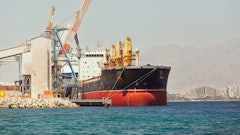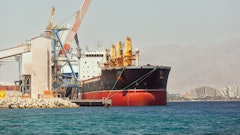
The ITS Logistics US Port/Rail Ramp Freight Index produced by ITS Logistics reveals increased transpacific volumes on the U.S. West Coast due to seasonal Lunar New Year restock as well as the strong possibility of congestion at East Coast ports.
“Despite our data showing all operations at normal levels, we are projecting that status to drastically change at both rail ramps and ports throughout the U.S. towards the end of January and beginning of February,” says Paul Brashier, VP of drayage and intermodal for ITS Logistics. “On the U.S. East Coast, there is the strong potential that containers could be diverted to unscheduled ports throughout the U.S. Gulf/East Coast to get vessels back into position due to increased transit times.”
Key takeaways:
- The current Lunar New Year restock has been paired with diverted volumes that are a direct result of shippers’ efforts to avoid the crisis in and around the Suez Canal. As a result, underutilized West Coast ports are expected to become stressed, especially in the Los Angeles and Long Beach terminals.
- As more freight is routed to the U.S. West Coast to avoid the Suez Canal, a significant amount of that volume will be transported via rail to reach East Coast ports. This will cause congestion at rail ramps throughout the United States as the infrastructure absorbs the change to the nation’s supply chain. In addition, data shows that both rates and bookings on transpacific lanes have increased drastically over the last two weeks.
- Long-term contracted rates and capacity will be affected, especially since these challenges are occurring during the ocean carrier contract season.
“Re-routed lanes from Asia to the U.S. East Coast have additional cost and transit time pressure that will continue to push volumes to transpacific trade lanes,” adds Brashier. “Ultimately, the full spectrum of the supply chain is being impacted globally. As with all disruptions, shippers, as well as carriers, need to be proactive about finding solutions to the current challenges and taking into consideration the financial impact of these decisions that the industry is feeling as a collective.”


























